This post provides an update on our IPv6 RIPEness project, including an analysis of IPv6 RIPEness for new Local Internet Registries (LIRs).
If you read the first RIPE Labs article on IPv6 RIPEness from April 2010, you'll notice that a lot has changed: IPv6 deployment is much more mature and has become mainstream, something that was not obvious in 2010 when only 8% of 6,748 LIRs had 4-star RIPEness. In 2010, we were looking at early signs of IPv6 deployment (the first four stars). Later we started looking for signs of actual IPv6 deployment (i.e., the fifth star IPv6 RIPEness). Also, some things stayed the same: we still give out t-shirts to people to promote deployment, and judging by the enthusiasm around that, it still seems to work as a motivator!
We did ask you, our community, what thresholds we should use for the fifth star, which signifies actual IPv6 deployment. The proposal to exponentially increase the threshold was most popular, so for 2016, we used 16% as a threshold for LIRs to get their IPv6 RIPEness fifth star (and a t-shirt). Now it's 2017, so we've increased the threshold to 32%.
In this post, we'll review IPv6 RIPEness for new LIRs, the effect of moving to the 32% threshold, and a proposed update on our methodology for testing content.
IPv6 RIPEness for new LIRs
First, let's look at the maturity of the first four stars we award for IPv6 RIPEness. As a reminder, the first four stars are awarded according to criteria outlined in this RIPE Labs post.
Figure 1 below shows how the IPv6 RIPEness scores vary with the age of the LIRs. We've grouped the LIRs into the year in which they joined the RIPE NCC. The width of each bar is proportional to the number of LIRs which joined in respective years. Inside each bar, the different colours represent the fraction of LIRs with, respectively, four, three, two, one and zero stars of IPv6 RIPEness.
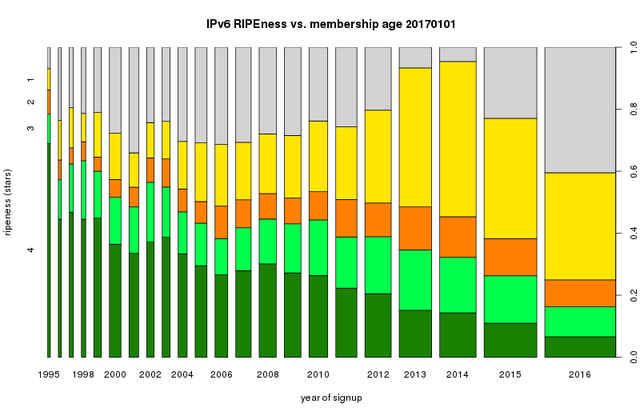
Figure 1: IPv6 RIPEness vs. membership age (1 January 2017)
It is clear that older LIRs are more likely to achieve four-star IPv6 RIPEness: 68% of the 116 LIRs who signed the service agreement in 1995 score four stars. Only eight of these LIRs do not have any IPv6 addresses registered under their name. In the case of these eight, it is possible that over the course of 20 years these originally independent LIRs have become part of a larger organisation that holds IPv6 via another LIR, a parent or sister company.
This figure also shows that 2013 and 2014 record the largest proportion of LIRs without any IPv6. This is a direct effect of the RIPE Policy for IPv4 allocations after the available pool (first) reached the level of one /8. Between 14 September 2012 and 19 March 2015, this policy required all LIRs who requested their final /22 IPv4 allocation to also hold an IPv6 allocation, either from the RIPE NCC or from an upstream LIR. The motivation for this policy was to encourage IPv6 adoption and prompt LIRs to take first steps. However, if IPv6 RIPEness levels are an indicator of steps taken, no matter how small, the effects of the policy were very limited. With respect to other years, before the policy became active and after it was abandoned, we see 2013 and 2014 show the largest increase in one-star RIPEness. That is, most of the LIRs who obtained IPv6 address space because it was required by the policy to obtain a final IPv4 allocation have not done anything to increase their level of IPv6 RIPEness: no reverse DNS, no route6 object in the routing registry and not even part of the IPv6 space they hold announced in the BGP routing table.
What we do find, however, is that in absolute terms the number of LIRs per year that achieve four stars is pretty constant. That means we simply have many new LIRs not even taking the first step!
Assessing IPv6 Content: Alexa Top 1M vs Cisco Umbrella 1 Million
For assessing signs of actual IPv6 deployment (the fifth star) we look at both statistics for access networks (via APNIC's Google Ads experiment) as well as content networks. For content networks, we historically based this assessment on the popular Alexa Top 1M websites ranking. In November 2016, however, Alexa announced that they would no longer be updating their Top 1M ranking of popular web domains. In reaction, Cisco Umbrella started publishing an alternative ranking.
Such rankings are commonly used throughout industry and academia as a set of popular domains that measurements can be run against. Both of these datasets, of course, contain their biases: Alexa's ranking relies on a browser plugin to count domains that users are accessing; Cisco Umbrella's ranking relies on aggregating billions of DNS queries from the Umbrella network, counting how often each domain was queried. Each dataset relies on proprietary algorithms to arrive at their final rankings. One interesting distinction is that the Umbrella ranking not only contains websites, but also includes queries for names representing other services, such as DNS and NTP, implying that by using Cisco Umbrella's ranking, we'd score LIRs against more than just their web infrastructure. More detail on how the datasets differ can be found in this gist.
Of particular interest to us is the LIRs discovered by resolving each domain name in these rankings and mapping the resulting IP addresses back to the LIR that they are registered to. First, let's look at the full set of LIRs returned by resolving each of these lists:
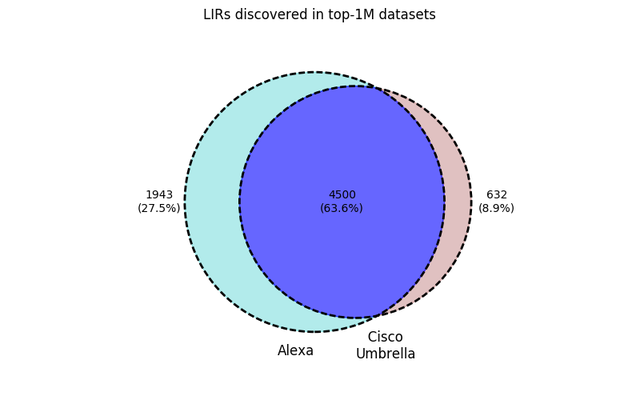
Figure 2: LIRs discovered in both, the Alexa Top 1M and the Cicso Umbrella datasets
Combined, that's a total of 7,075 LIRs discovered across the set of 15,178 LIRs (i.e., 46.6% of the total). Alexa's Top 1M discovers 42.4% of the full set of LIRs, and Cisco Umbrella's 1 Million discovers 33.8% of the full set of LIRs, showing that the two lists do feature quite different sets of targets. The important part for IPv6 RIPEness, though, is how they score on content accessibility.
Let's take a look at the LIRs that meet 16% (2016) and 32% (proposed for 2017) thresholds for each dataset after we apply our weighted scoring:
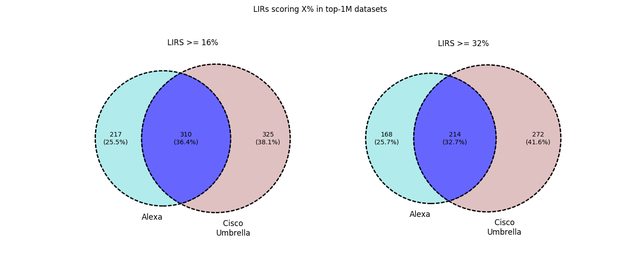
Figure 3: Comparing Alexa Top 1M and Cisco Umbrella datasets for 2016 and 2017 thresholds for the fifth star
Here, we can clearly see that the domains listed in the two rankings leads to notably different results; for the 2016 and 2017 thresholds, only around two-thirds of the LIRs that meet the threshold are found in both rankings.
The two rankings combined, however, expands the set of LIRs that meet our thresholds. If we combine the scored results from Alexa's and Cisco Umbrella's rankings, 5.6% of all LIRs meet the 16% threshold, and 4.3% of all LIRs meet the 32% threshold. Given the number of LIRs that meet the 32% threshold isn't much lower than the 16% threshold, we're happy going ahead with the 32% threshold for 2017. Further, given the expanded visibility that the two rankings provides, we propose that we use both datasets when testing for the fifth star; you just need to hit 32% in either set to pass our content test.
Finally, on the topic of top-million lists, the Alexa list continues to be updated daily and so we plan to continue using it alongside the Cisco Umbrella dataset until it expires. It is unclear when the Alexa ranking will expire. These lists are important to the measurement community, and understanding their differences is fundamental to understanding their biases. Please feel free to get in touch if you're interested in looking in greater detail at this data and running a deeper analysis.
IPv6 RIPEness T-shirts
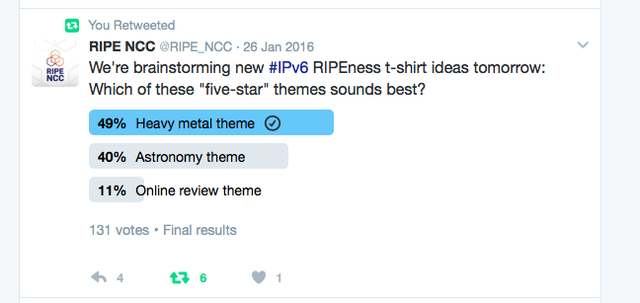
Nathalie asked for input on an IPv6 RIPEness t-shirt for 2017, and based on this input we had a new 2017 IPv6 RIPEness t-shirt designed:
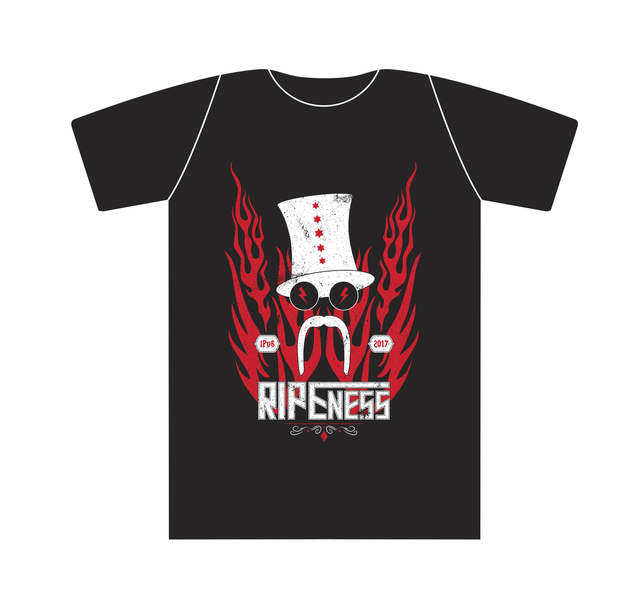
All you have to do to get this t-shirt is achieve the fifth IPv6 RIPEness star (in either content or access). History has shown that sometimes all it takes is a little nudge (like a kick-ass 80s metal-themed t-shirt!) to encourage people to take those final steps to deploy IPv6.
You'll have to deploy IPv6 at some point in time, so why not now?

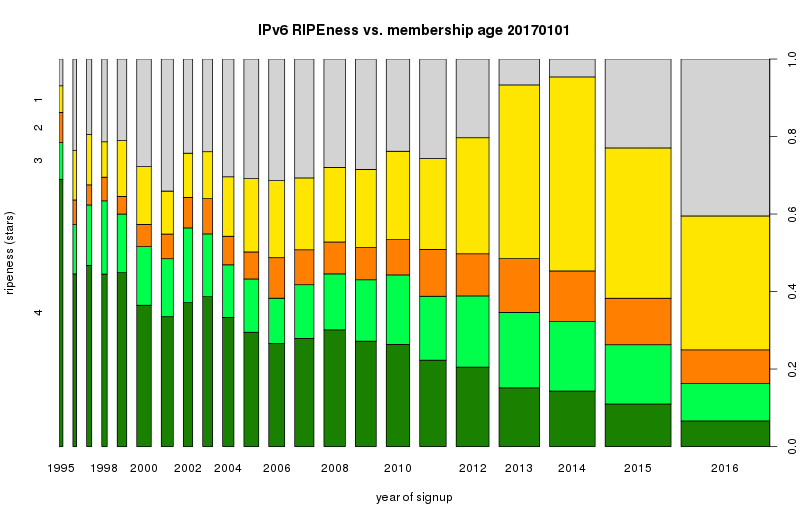
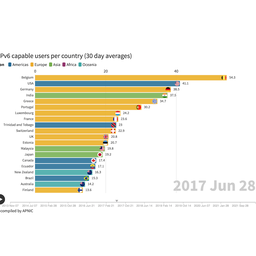

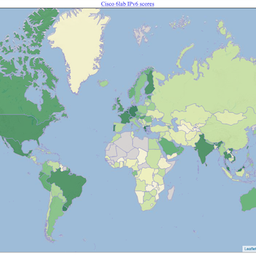
Comments 0
The comments section is closed for articles published more than a year ago. If you'd like to inform us of any issues, please contact us.